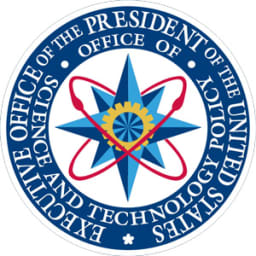Part 1 of 2 Parts
The White House's Office of Science and Technology Policy is strongly backing nuclear power a reliable and sustainable energy source for data centers.
About two years ago, nuclear energy was unwelcome as an important source of energy. One of the keynote speeches at Data Center World 2024 was delivered by Rian Bahran, Ph.D., Assistant Director of White House Office of Science and Technology Policy. He suggested a broadening of the definition of clean energy to include nuclear. This has opened the door to a reversal of the long-term trend of closing nuclear power facilities. It also heightened advocacy for onsite nuclear power in large data centers.
Bahran began on familiar ground. Data centers account for one to two percent of annual US energy consumption. In key metros, nuclear power consumption is much higher. Combined with pressure on the grid and the hefty power demands occasioned by AI, new ways need to be found to power data centers efficiently and sustainably.
One possible option is to site a new data center beside a nuclear power plant. Amazon Web Services (AWS) has acquired a twelve hundred acre data hub known as the Cumulus data center campus in Berwick, PA. It is directly connected to the two and a half billion gigawatt Susquehanna Steam Electric Station (a nuclear plant). An existing forty eight megawatt data center was already operating at the site. AWS plans to eventually extend that to as much as nine hundred and sixty megawatts. In order to power it, the company has entered into a ten-year plus energy supply agreement with Talen, the current owner of the nuclear plant.
Bahran said, “Wind and solar play a major role in decarbonization but we need a stable and firm nuclear backbone. Nuclear and renewables can be complementary.”
As a suggested alternative to huge new nuclear facilities, another way to introduce nuclear is small modular reactors (SMRs). Each SMR can generate an average of seventy seven megawatts.
Britt Burt is an energy analyst at research firm Industrial Info Resources. He said, “Hopes are rising about SMRs. About two gigawatts of new-build nuclear is scheduled to begin construction during the next five years.”
Data center operator Standard Power is planning to deploy up to two dozen SMRs on two data center campuses in Ohio and Pennsylvania. Reactors built by ENTRA1 will use SMR technology from NuScale Power. NuScale already has an SMR design approved by the Nuclear Regulatory Commission (NRC). NE Edge plans to build a one and a half million square foot data center campus beside a Dominion Energy nuclear power plant in Waterford, Connecticut.
Bahran made comparisons between a conventional reactor, SMR, and microreactor in terms of their sizes and generated power.
He said, “The latest generation of SMRs have small footprints, greater safety, better seismic capabilities, and provide reliable electricity.Small nuclear designs can grow modularly as the data center grows and won’t need to be refueled for up to eight years.”
Please read Part 2 next
